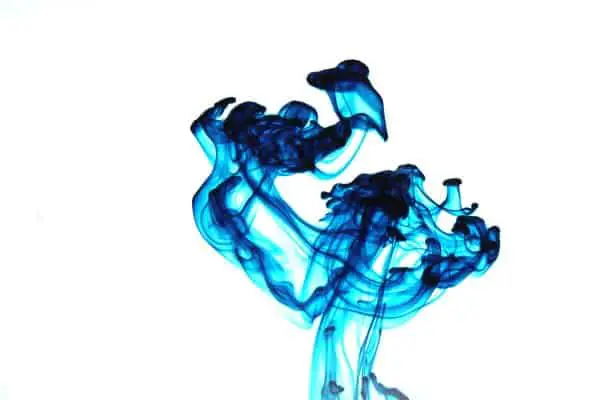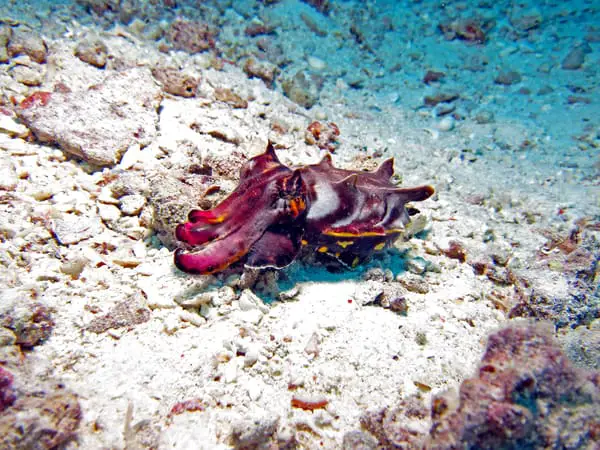Using a fountain pen is a classic way to put ink to paper for writing, calligraphy, and art. It’s also a great way to reduce waste, thereby contributing to a better environment in the process. But if you’re a person who’s very animal-conscious with what you use and consume, there are few choices and information available.
You’d think that, with so many companies jumping on the vegan-labeling bandwagon, fountain pen inks wouldn’t be so challenging to locate. Unfortunately, it is unclear to decipher which inks on the market are honest to goodness vegan and cruelty-free.
Faber-Castell inks are a good option if you want vegan fountain pen ink (Source ). Another vegan fountain pen ink option we found is Blackstone inks (Source
). Another vegan fountain pen ink option we found is Blackstone inks (Source ).
).
An honorable mention; in our research, we found that Pilot Inks are animal-friendly tested, but we haven’t been able to confirm yet if they are also vegan.
This hunt can be very tedious and frustrating when researching what’s available. You might find it challenging to abide by vegan conscientiousness regarding fountain pen inks. But there’s a caveat to the ingredients that will come down to your feelings on the matter.
A Brief History of Chemistry, Ingredients; Formulations
Knowing the backstory behind inks and where they come from helps give us clues to their modern makeup. The earliest versions of what we now know to be ink comes from ancient Egypt and China. People used these antediluvian staining formulations very much in the same way we do today; for art, writing and calligraphy.
These antiquated inks often incorporated soot from burned trees and forest brush, like bamboo and papyrus. Eventually, iron gall ink is a process that combines tannins with salts of iron sulfate. But this is a dangerous mixture due to heavy iron exposure known to create severe health risks.
Other kinds of inks used since 2500 BC often blended some animal byproducts to create the dye, such as dried blood and charred bone. A wetting agent, like water, animal fat, sap, or oil, would reconstitute the dry mixture.
The Evolution of Aniline Dye
Aniline dyes are the main ingredient of fountain pen inks and have been since their invention in the mid-19th century. It’s discovery began through destructive indigo distillation processes in 1826.

The color blue came about by isolating coal tar with a lime chloride treatment in 1834. In 1841, caustic potash mixed with indigo dye created Aniline, also known as Phenylamine. It’s been popular for producing pen inks ever since.
Aniline is an organic compound derived from indigo, tar, and/or coal. Black inks contained other things like soot, tannins, and gum arabic. But the problem in writing with this type of ink formula is the dreadful ease with which it smears. Light exposure resulting in faded ink was also a significant issue, making the inks lacking archival staying power.
Modern Components
Today’s inks contain Aniline in combination with other constituents and additives. These formulations help to solve earlier problems with great success. But these ingredients do incorporate some derivative of animal byproduct, usually from dinosaurs.
Most Common Ingredients
Today, manufacturers use Ethylene Glycol and Phenol as standard ingredients. Ethylene Glycol allows for a better ink flow, but it’s processed from fossilized sources, like petroleum. Phenol, another common ingredient, is an organic compound that stops mold and bacteria growth. This came from coal tar, but these days it comes from petroleum and other dinosaur-based products.
Often, manufacturers add extra ingredients. Some of these substances help to speed up drying. Other materials act as a preservative and an anti-coagulant while it sits in the pen. It’s not clear what these are as it can vary from brand to brand, and it isn’t easy to research these ingredients.
Sodium hydroxide, otherwise known as lye, is one of these elusive ingredients. It’s a chemical compound that comes in crystal form and is often used in soapmaking. It’s a white, waxy, odorless, and colorless substance to make drying faster. It’s also the star ingredient in disappearing/reappearing inks.
It is next to impossible to discover the other ingredients and where a company procures them. What’s more, the secrecy around disclosing ingredients has more to do with preventing competitors from replicating the recipe. Some brands may even be more unscrupulous than others, using questionable ingredients altogether.
True Sepia Inks Are Questionable
You may want to avoid purchasing true sepia inks because they compose dried cuttlefish and ground shellac. Cuttlefish is self-explanatory, but shellac is a resin from the secretions of the female lac bug in India and Thailand for those who don’t know.

This animal-based concoction gives the ink a dark, red-brown color. Of course, some manufacturers make synthetic versions that are more cruelty-free. So, if you are longing for an excellent sepia tone, you’ll have to do some in-depth research based on your preferences and practices.
The Vegan Debate Around Ingredients
Now, there’s a heated debate and disagreement among many vegans about using these ingredients and whether they pose a philosophical issue or not. It very much depends on how strict they feel about it and what’s falls under the category of “animal byproduct.” On this point, animal byproducts draw an idyllic line in the sand.
This is because the animals used in most common ingredients were dead before the acquisition, processing, and manufacturing. They weren’t killed or harmed to reap their benefits, like fossils and their derivatives, where dinosaurs died long ago.
It’s a Personal Choice
And this is where much vehement disagreement and debate comes in. Some people feel you shouldn’t ever have any animal in anything used or consumed. Yet others think it’s okay to use any pen ink because the animals weren’t harmed to create the product.
Making Sound Decisions
This is a puzzling issue, and it could leave you feeling out on a ledge between what is and isn’t acceptable with your cruelty-free practices. The problem is that fountain inks are not regulated by a government agency, like the FDA or the EPA. Companies are not required to list all their ingredients or provide socially-conscious labeling.
Lots of Claims, No Verification
Many online forums and posters state that companies like Faber-Castell and Speedball have vegan fountain pen inks. But there is nothing on their websites to show this for sure. The same is true for lists that recommend inks made by Dr. Ph. Martin and Daler-Rowney. Nothing on their sites display pro-vegan products either in a statement or search.
Speedball provides safety data sheets that detail the use of ethylene glycol, phenol and sodium hydroxide. Other vegan art supply listings recommend not using Speedball potted inks at all. But they have an animal-free fountain pen cleaner to remove clumping and clogged ink.
Although Pilot doesn’t offer fountain pen inks, it’s worth mentioning their products to illustrate the iffiness promoted across the web. PETA’s website and others recommend Pilot as a cruelty-free pen for vegans. But when you click on the link, the page is not there. If you search Pilot’s site, they don’t have vegan-friendly claims and no search results.
Royal Talens, the Lone Soldier
Royal Talens is the only company that leads the charge promoting vegan-friendly fountain pen inks. If you search their site for “vegan ink,” a considerable list comes up with an array of acrylic ink pots and bottles. All these you can use in fountain pens designed without a cartridge.
As of this writing, there are no companies or manufacturers that make fountain pen ink cartridges free of animal products. With this, you’ll have to rely on your ideas, beliefs, and morals about what you consider to be vegan-friendly and cruelty-free.
Product Testing on Animals
Definite brands to steer clear of are Scotch 3M and Bic. These two are sure no-nos for any conscious vegan. This is because they do conduct product testing on animals. Also, there are rumors that most popular brands do animal testing on all their inks. But finding evidence and proof of this is sketchy and uncertain at best.
Companies like Faber-Castell, Speedball, and Royal Talens do not perform animal product testing. Pilot is also a famous brand that does not use animal testing for their products. So, on that merit alone, you could use these fountain pen inks with confidence and a clear conscience. That is, as long as you don’t have a strong aversion to any animal products, even fossilized ones.
It Comes Down to You
Albeit most ingredients and constituents within fountain pen inks lend themselves to a vegan-friendly lifestyle. But there are other questionable additives too. Determining that information for a definitive reference framework is next to impossible to research. Your decision will come down to sitting with yourself and figuring out how strong you feel about your position in this debate.
If you’re a staunch vegan, try the inks by Royal Talens, Faber-Castell, and Blackstone. They’re the only ones that promise vegan fountain inks in various colors. Otherwise, it might be best to avoid fountain inks altogether and use a pencil or check out Faber-Castell’s vegan crayons. If you’re okay with the inks coming from previously-dead dinosaurs and fish, then you can use whichever product you like most.
